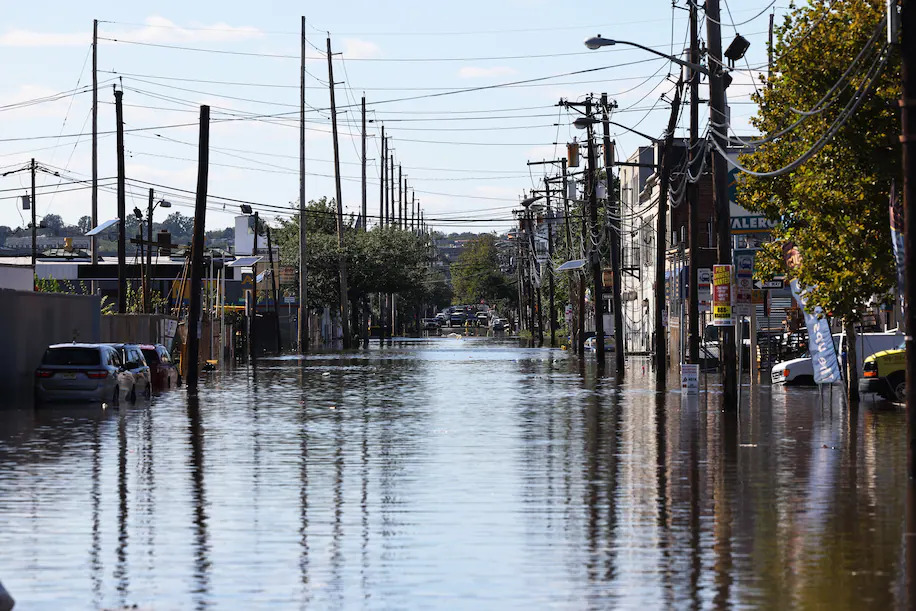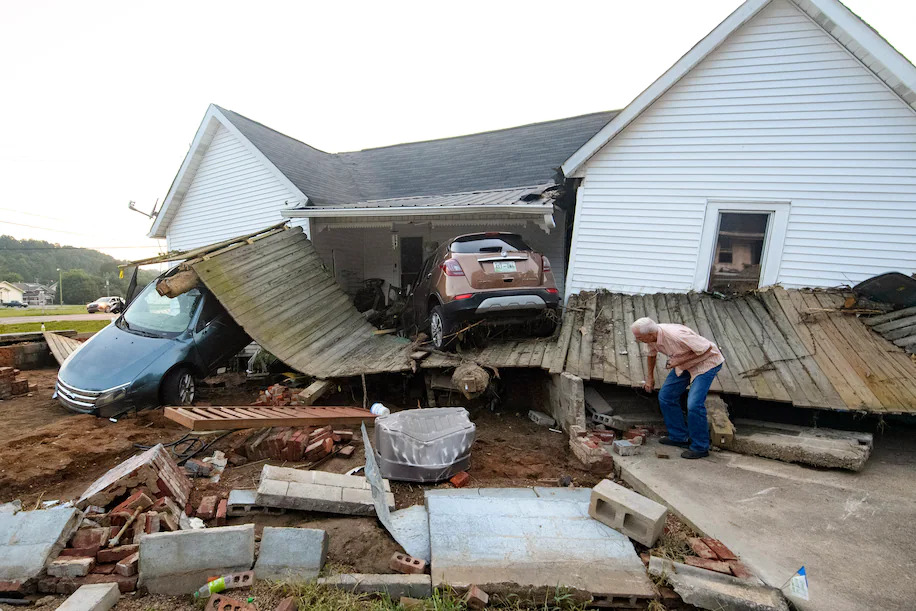
The intense rains that fell across western and southern Germany in July were both devastating and historic. Up to eight inches of rain fell in less than 24 hours, flooding communities and causing more than 200 fatalities. In some areas, rainfall so intense was expected only once every 500 years.
For hydrologist Manuela Brunner, the catastrophic flooding event was alarming for another reason.
About a year earlier, Brunner and her colleagues began investigating how flood patterns would change in a warming world in southern Germany. They found that not only will extreme precipitation events occur more often and intensely, but also extreme flooding in this area. Weeks before their paper was published, their projection came to life.
“This is totally a coincidence. We couldn’t obviously tell this was going to happen this summer,” said Brunner, a lecturer at the University of Freiburg and lead author of the study. But she said this flooding is exactly “the type of event for which we’re showing an increase in flood intensity or also flood frequency in the future.”
As global temperatures rise, researchers have been investigating how a warmer climate will affect flooding patterns. Although precipitation events have undoubtedly increased in frequency and intensity, researchers have been unable to clearly discern how flooding will change — until now.
New research by Brunner and her colleagues shows the occurrence and intensity of extreme flood events will increase, but smaller and more moderate floods will probably decline.
“There is extensive evidence that climate change is increasing the frequency and intensity of extreme precipitation events around the world, but much less evidence that flood events have increased over the same period,” wrote Daniel Swain, a climate scientist at University of California at Los Angeles and a co-author of the paper.
“This new research demonstrates how climate change could actually have divergent effects for very large but rare floods versus smaller but more common floods,” he said.
Swain said additional work would be needed to confirm that this flooding behavior applies more broadly around the world but suspects it probably does.

Brunner and Swain, along with colleagues at the National Center for Atmospheric Research and Ludwig-Maximilians University of Munich, looked at the relationship between precipitation and flooding for 78 watersheds in Bavaria, Germany.
The team ran 50 computer simulations for climate projections from 1960 to 2099, assuming current greenhouse gas emissions would not be reduced through the end of century. Each simulation was fed with different initial conditions and produced varying outcomes for climate variables such as precipitation, temperature and wind.
These climate variables were then fed into a hydrological model — showing water sources above and below the ground — to better understand the surface conditions, such as stream flow and soil moisture.
In line with previous research, the team found that precipitation will increase and intensify in a warming climate. The largest increases in precipitation occurred in the most extreme and rare events.
By the end of this century, the authors found, intense precipitation events that would typically occur two times per century would occur twice as often. Events that would occur once every 200 years would become four times as frequent.
Flooding trends were more nuanced.
In general, they found that moderate flooding events depended on land-surface processes, such as soil moisture or the amount of snow in the watershed.
For instance, if soil moisture was high, perhaps from previous recent rains, then even a small amount of additional precipitation could cause the area to flood. Brunner also said that water falling over impermeable surfaces, such as concrete sidewalks in cities, could cause flooding even from relatively small amounts of rain. Both of these were contributing factors to the disastrous flooding in New York in early September.
Conversely, if soils were extremely dry, higher amounts of rain could be absorbed into the ground and could reduce flooding. Brunner says this scenario is going to be more likely to happen “as the climate warms and leads to drier conditions so it can absorb more of these moderate extreme events.”

Ernest Hollis looks for items at his granddaughter's house, which was devastated by floodwaters, on Aug. 23, in Waverly, Tenn. (John Amis/AP)
However, the study showed that, at a certain point, the intensity of the precipitation overwhelms all other factors to cause extreme flooding — as exemplified this summer. In addition to the July floods in Germany, devastating summer floods in China and central Tennessee were one-in-1,000-year events.
Brunner said extreme flooding doesn’t require one-in-1,000-year rainfall, however. In the study, they found that extreme flooding could happen for deluges that occur as frequently as every 20 to 50 years — which people could experience at least once or twice in their lives.
The thresholds for extreme flooding vary by region, season, elevation and other local land factors. Although the study focused on watersheds in Bavaria, the study region shared hydrological and climate conditions that are found across the world.
“The event in Germany that happened is one of these super-extreme events we see very rarely,” Brunner said. Given the increasing global temperatures, she said, “it’s kind of not surprising that this was going to happen sometime somewhere in Germany or in other places of the world.”